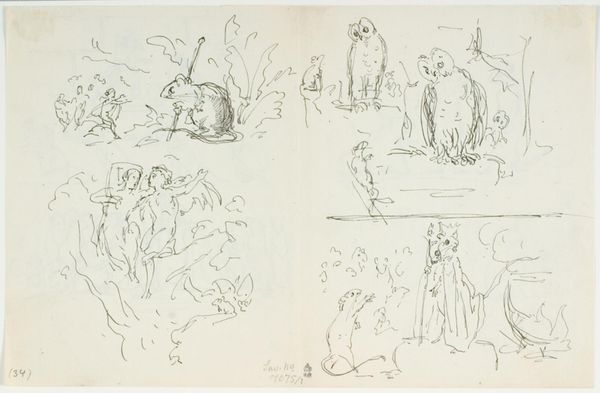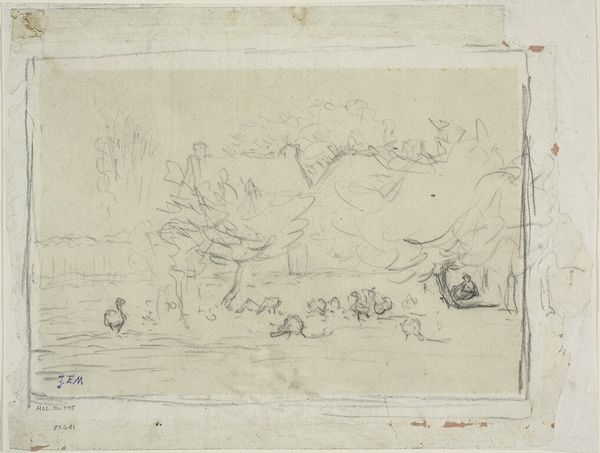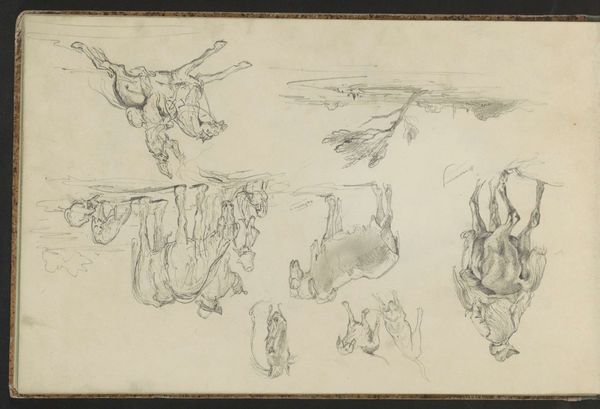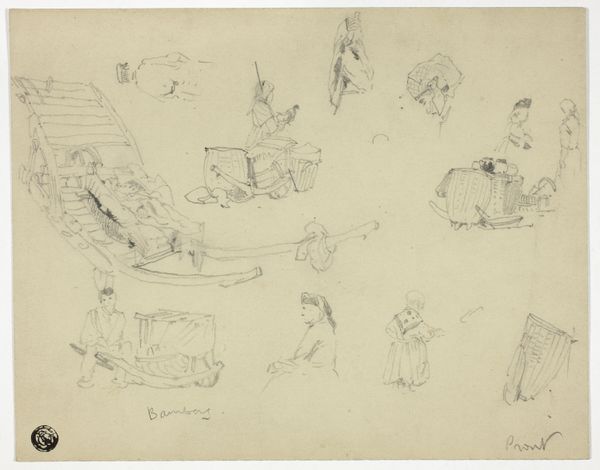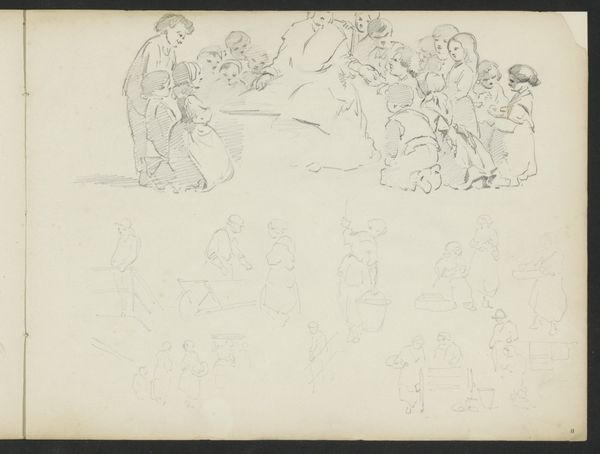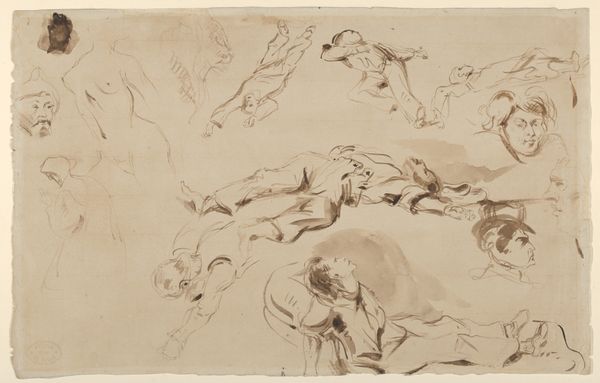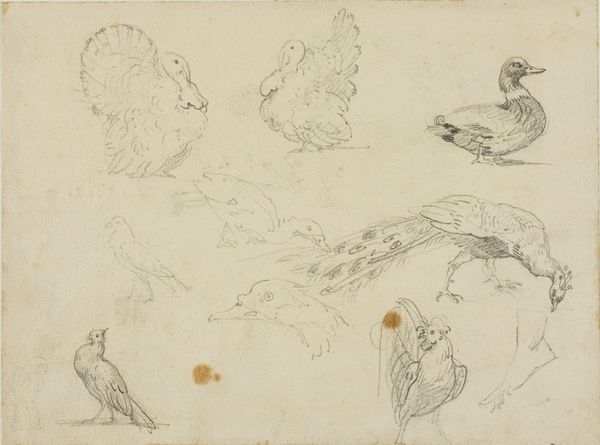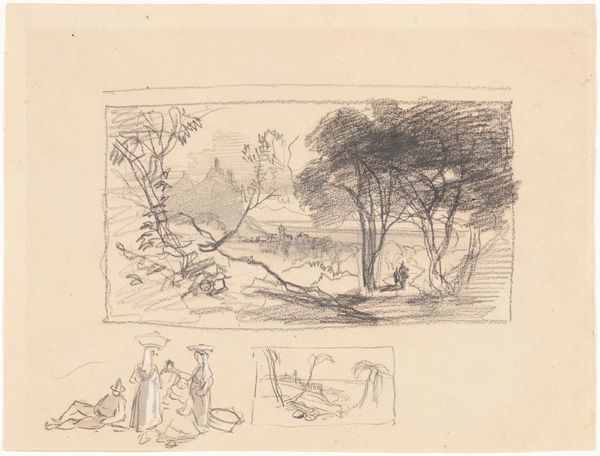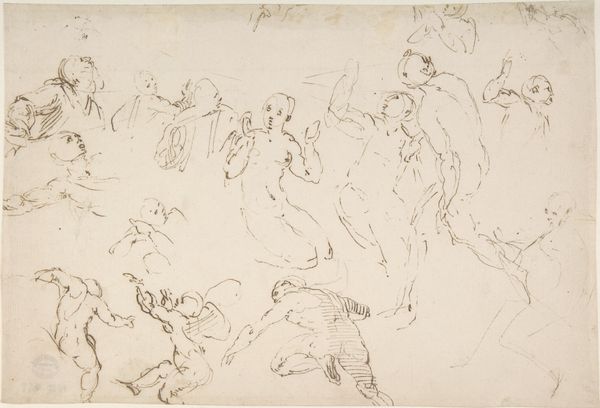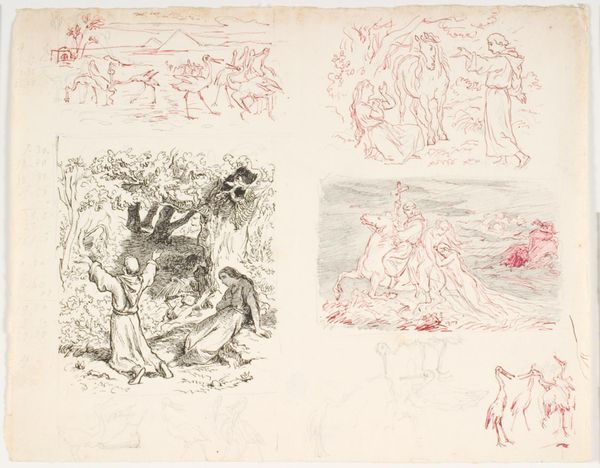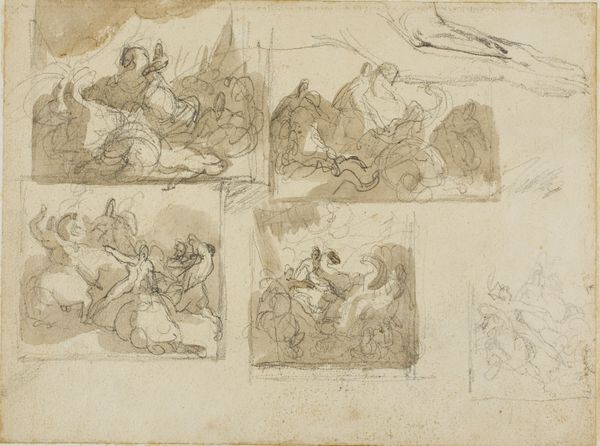![Studies of Crowing Rooster and Reclining Figures [recto and verso] by John Flaxman](/_next/image?url=https%3A%2F%2Fd2w8kbdekdi1gv.cloudfront.net%2FeyJidWNrZXQiOiAiYXJ0ZXJhLWltYWdlcy1idWNrZXQiLCAia2V5IjogImFydHdvcmtzLzNlNjdkNTdjLTI0ZTgtNDMyYS1iNDQzLTIwNzAzNTkyOTM3ZC8zZTY3ZDU3Yy0yNGU4LTQzMmEtYjQ0My0yMDcwMzU5MjkzN2RfZnVsbC5qcGciLCAiZWRpdHMiOiB7InJlc2l6ZSI6IHsid2lkdGgiOiAxOTIwLCAiaGVpZ2h0IjogMTkyMCwgImZpdCI6ICJpbnNpZGUifX19&w=3840&q=75)
Studies of Crowing Rooster and Reclining Figures [recto and verso] late 18th/early 19th century
0:00
0:00
drawing, paper, pencil
#
portrait
#
drawing
#
light pencil work
#
quirky sketch
#
figuration
#
paper
#
personal sketchbook
#
sketchwork
#
ink drawing experimentation
#
sketch
#
pen-ink sketch
#
pencil
#
sketchbook drawing
#
storyboard and sketchbook work
#
sketchbook art
#
initial sketch
Dimensions: overall: 15.9 x 20.8 cm (6 1/4 x 8 3/16 in.)
Copyright: National Gallery of Art: CC0 1.0
Editor: So, this is "Studies of Crowing Rooster and Reclining Figures" by John Flaxman, made in the late 18th or early 19th century, with pencil on paper. It reminds me of a page torn from a sketchbook – loose and informal. What strikes you most about this page? Curator: What stands out for me is the combination of classical figuration with the quotidian reality of a farm animal. Flaxman, of course, was deeply engaged with neoclassicism, drawing inspiration from antiquity, but sketchbooks often served a different function. I'm wondering how the rising merchant classes influenced the creation and circulation of works like this. How do you think this combination reflects the artistic climate of the time? Editor: That's an interesting perspective. It's like the rooster is crashing a very serious, neoclassical party. But what party is it and where were pieces like this exhibited, if anywhere? Curator: Well, I don't think it was intended for public consumption in its current state. Sketchbooks were intensely personal spaces, sites of experimentation. Flaxman probably never intended it to be shown publicly in his lifetime. The rising middle class enjoyed greater access to art, but this, in particular, may have served more as a document of ideas for a more polished artwork commissioned later. How might viewing this piece as preparatory rather than final alter our understanding? Editor: Hmm, seeing it as a stepping stone, it demystifies the art-making process. He’s just figuring things out. Maybe this wasn't high-brow culture yet, but practice. The museum holding it up as something culturally relevant now grants the piece value. Curator: Precisely. The value assigned, and by whom, drastically changes meaning across centuries. And considering that changes our understanding of the museum's role as a place of constructing that cultural and financial value. Editor: That’s made me think a lot about where artistic value actually originates. Curator: Indeed! It’s a complex interplay of artist intention, cultural context, and the institutions that present and preserve art for public consumption.
Comments
No comments
Be the first to comment and join the conversation on the ultimate creative platform.
